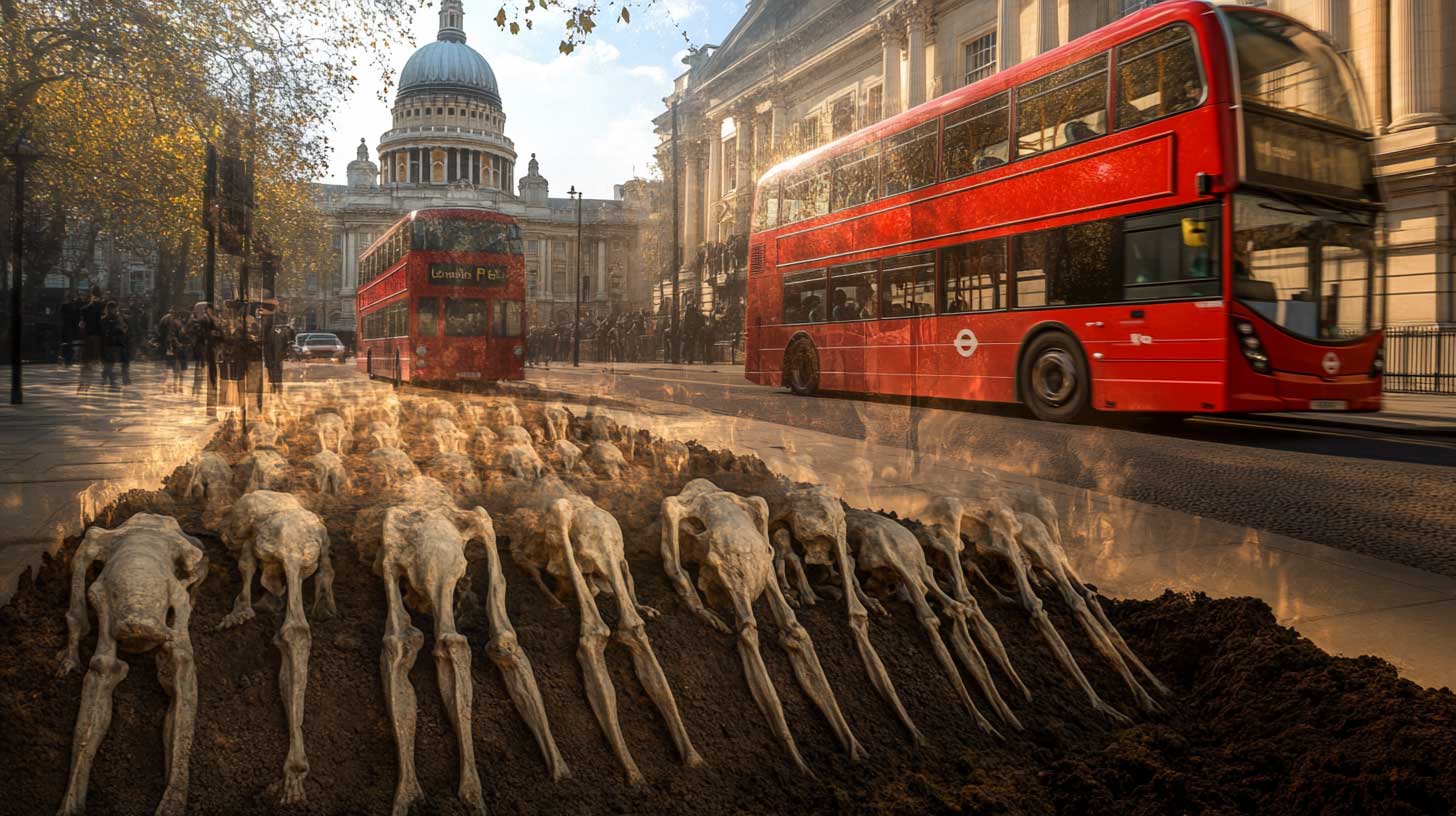
The Forgotten Plague Pits of London
Modern London hums with restless energy — traffic rushing, trains thundering, millions of footsteps drumming the pavements. But beneath the city’s skin lies a quieter story. Hidden under parks, churchyards, and even the foundations of iconic buildings is a secret chapter of the London plague pits history: the mass graves of the Great Plague of 1665.
These are not just relics of disease. They are the silent testimony of a city brought to its knees, of families torn apart, and of thousands who were laid to rest without names or markers. To uncover the London plague pits history is to peel back the layers of progress and hear the echoes of a London that almost collapsed.
The Great Plague: A City Gripped by Fear
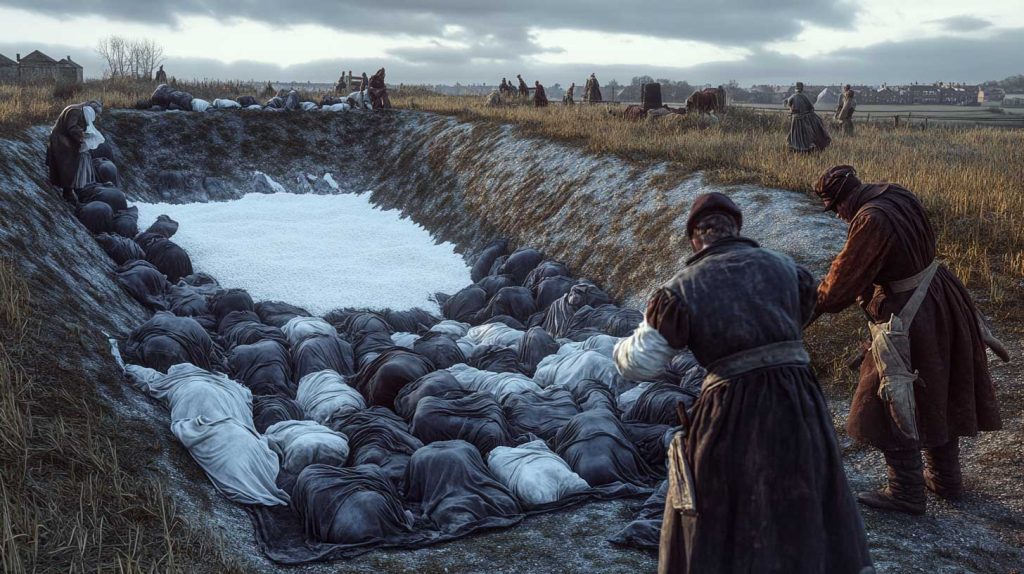
The story begins in 1665, when London was a teeming, unsanitary metropolis. Narrow lanes overflowed with filth, cesspits drained into the Thames, and rats scurried through every shadow. Into this environment crept the Yersinia pestis bacterium, carried by fleas that thrived on black rats.
At first the deaths were sporadic. But by that summer, the plague spread with terrifying speed. Parish clerks recorded mounting fatalities until the weekly toll reached more than 7,000 lives lost in a single week. Doors of infected homes were daubed with a red cross and the chilling plea: “Lord have mercy upon us.”
The wealthy fled to country estates, while the poor had no escape. London’s graveyards quickly filled, the stench of death overwhelming parishes. The question became urgent: where could the dead go, when the living had no room left for grief? The answer was the plague pit.
What Were the Plague Pits?
The phrase “plague pit” suggests hasty trenches filled with bodies. The truth was more measured, though no less devastating. These pits were vast communal graves, sometimes dug in exhausted churchyards, sometimes carved into open fields on the city’s fringes.
Contemporary records show that pits were often 20 feet deep or more, with the dead buried in layers, lime scattered between to mask smell and hasten decay. This was not cruelty, but necessity. Priests and parish officials did what they could, but with thousands dying, the rites of individual Christian burials were impossible. The London plague pits history is not one of disrespect but of scale: the overwhelming tide of mortality that forced the city to abandon tradition in the face of survival.
Famous and Infamous Sites: London’s Hidden Graves
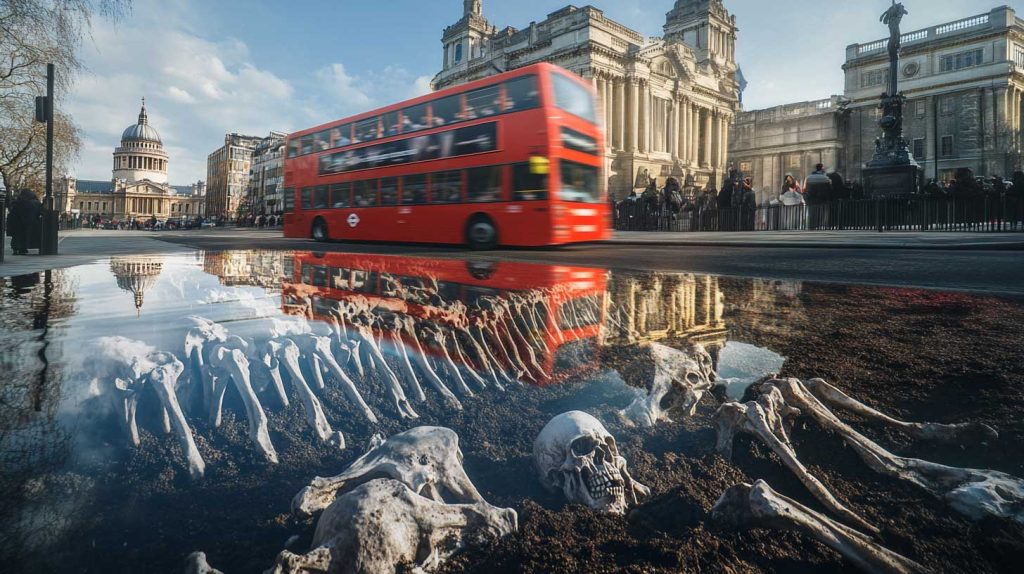
Centuries later, the city’s geography still bears traces of these desperate days. Many former pits now lie beneath landmarks or green spaces where Londoners stroll, unaware of what lies below.
- Pesthouse Field, Finsbury: Once a burial ground on the edge of the city, today absorbed into modern boroughs.
- Charterhouse Square, Farringdon: Excavations for the Crossrail project in 2013 uncovered 42 skeletons, some with plague DNA still detectable — a direct, chilling link to 1665.
- Burlington House, Piccadilly: Beneath the courtyard of what is now the Royal Academy of Arts, records suggest a pit once received victims from nearby parishes.
- St. Paul’s Churchyard, Covent Garden: Known as the “actor’s church,” its grounds once served as a resting place for plague dead.
- Other hidden sites: Evidence points to plague burials under Liverpool Street Station, the Natural History Museum, and green oases like Green Park and Soho Square.
The London plague pits history is therefore not remote but physical — beneath cafés, stations, and squares where daily life continues.
Between Folklore and Archaeology
Over time, folklore wrapped these burial sites in myth. Builders claimed to smell phantom decay when digging foundations; locals whispered of ghostly figures drifting through plague fields at dusk.
Yet archaeology tells a quieter, sobering story. The remains found at Charterhouse Square showed bodies carefully aligned in rows, not carelessly tossed. The pits speak not of hysteria but of resilience — of communities overwhelmed but still trying to grant the dead a measure of dignity.
The horror of the London plague pits history is not born of cruelty, but of necessity.
The Legacy Beneath London’s Streets
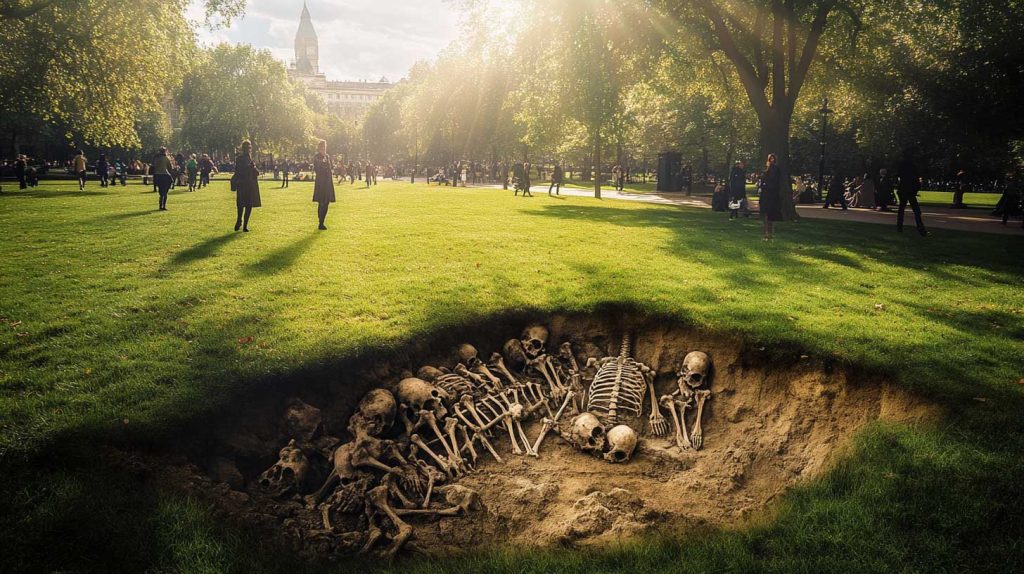
The plague pits did more than hold the dead. They shaped the living city. Because land tainted with memories of mass death was often shunned for development, many sites remained open and eventually became parks, churchyards, or communal gardens. Green spaces like Green Park may owe their survival to the graves beneath.
They also left a legacy of vigilance. The Great Plague was one of the final sparks that led to early public health reforms, a growing awareness that sanitation was not just cleanliness, but survival.
Even now, every tunnelling project in London — whether a new Tube line or a building foundation — carries a pause of anticipation. Archaeologists move in first, because to dig into London’s soil is always to risk uncovering its buried past. Human remains are still unearthed with striking regularity, each skeleton a reminder of the fragility of life in 1665.
Walking With the Dead

There are no grand monuments for the plague victims. Their memorials are the very spaces where life continues. To sip coffee in Soho Square or cross Farringdon Station is to move through a cemetery without gravestones.
The London plague pits history is more than a footnote. It is a humbling reminder that beneath the glass towers and crowded streets lies a city layered with suffering and endurance. Londoners live daily above the bones of their predecessors — a silent congregation whose story still shapes the ground they walk on.
The forgotten pits are not just about death; they are about survival. They remind us that cities endure, even when their people are tested to breaking point. And they whisper that every step through London is also a step across history.









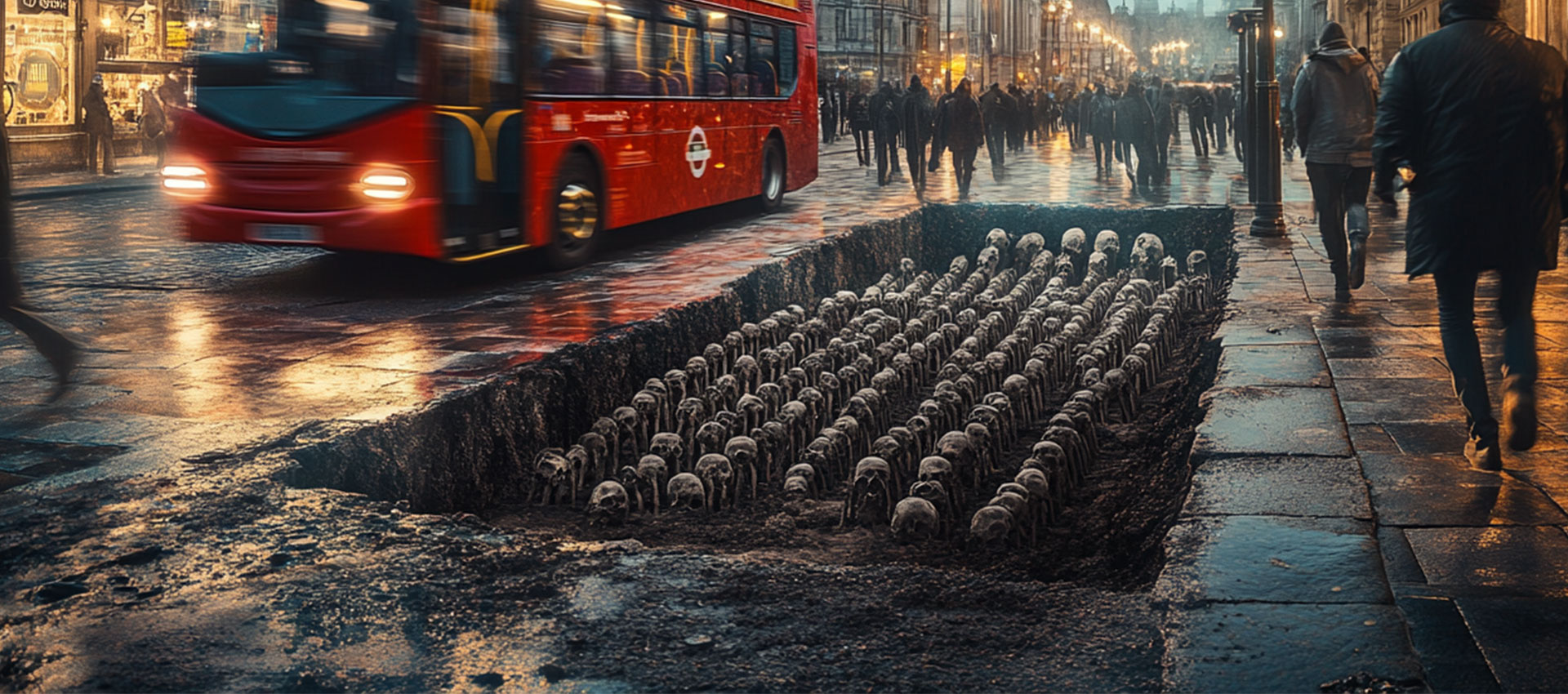
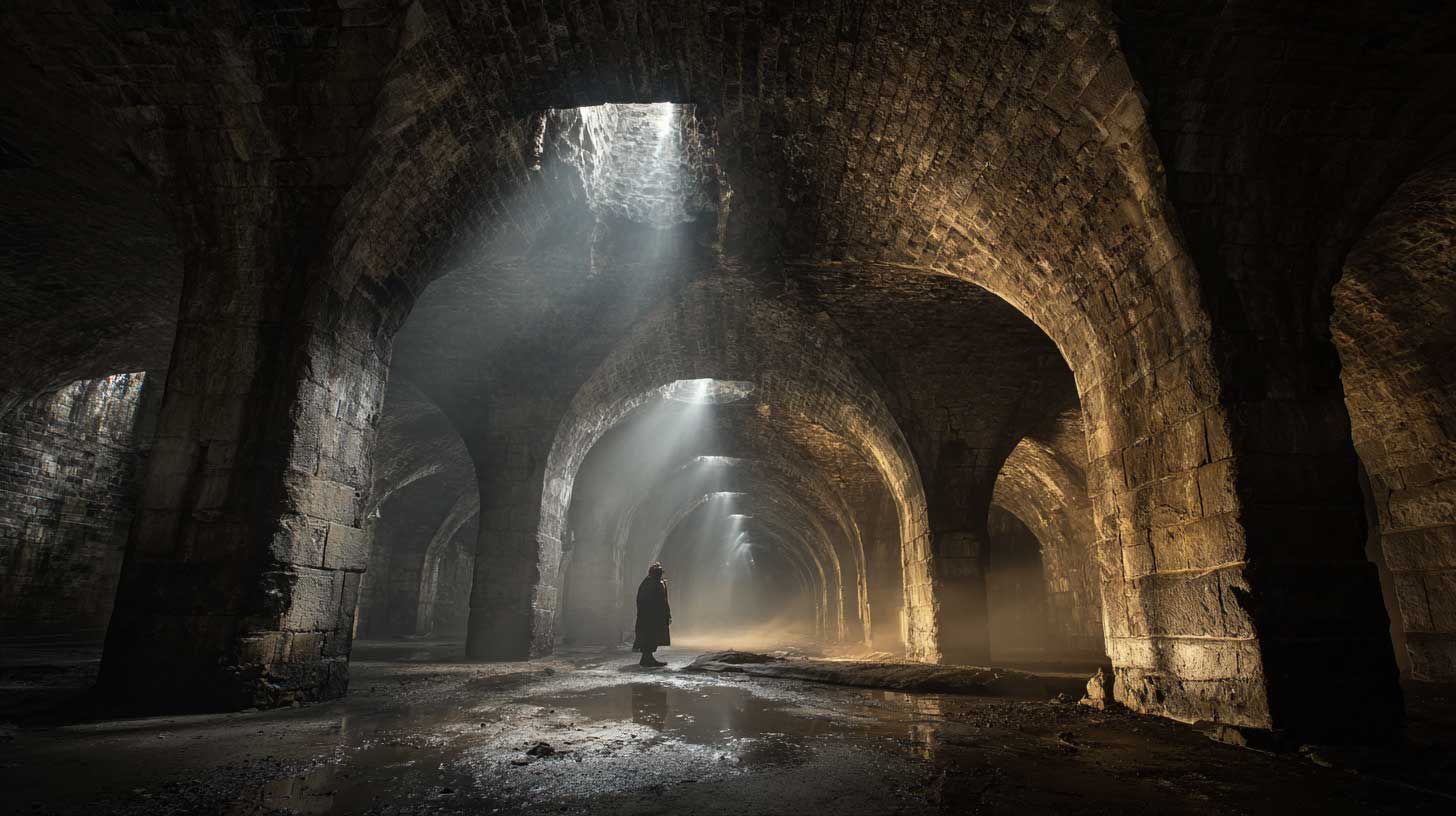



No Comments